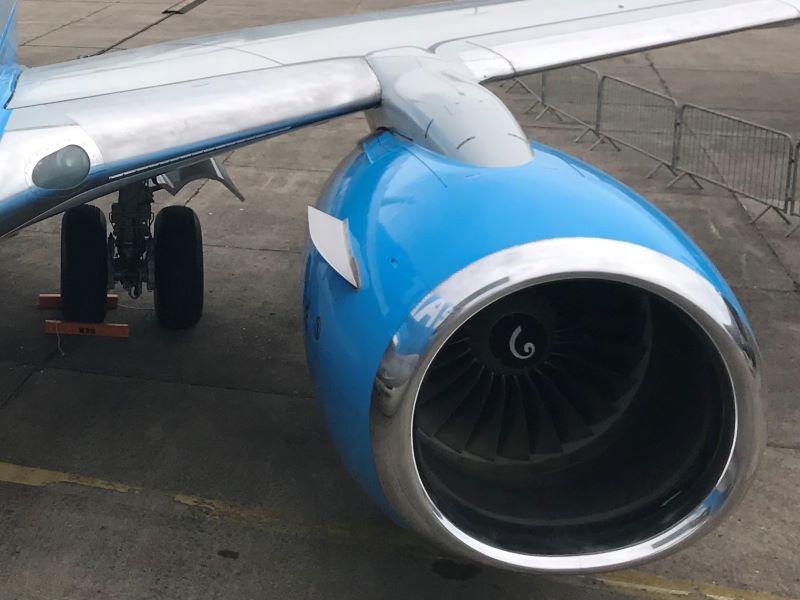Industry Assessing Scope, Risk Of Unapproved CFM56, CF6 Parts Documentation

Regulators and engine suppliers GE Aerospace and Safran are working to verify the scope and risk of an apparent records-falsification scheme that has so far turned up more than 70 parts sold by a UK-based parts broker with forged airworthiness documentation.
At least 74 instances of falsified release certificates and related documents have been linked to parts sold by AOG Technics. In 72 cases, they were European Union Aviation Safety Agency (EASA) Form 1s attached to CFM56-5 and -7 parts. Two cases of unverified FAA 8130-3s provided with GE Aviation CF6 parts have also turned up.
“It has been established that numerous authorized release certificates for parts supplied via AOG Technics have been forged,” EASA said in a statement to Aviation Week. “In each case, the approved organization identified as the originator on the certificate has confirmed that they did not produce the certificate, and that they were not the originator of the part.”
EASA, in an early August suspected unapproved parts (SUPs) alert, asked anyone with material supplied by AOG Technics to inspect related approval documentation and verify with issuers—in this case, the manufacturers—that the paperwork is valid. Any parts with questionable paperwork should be removed from aircraft or spares pools and quarantined.
The issue came to light in late July when CFM International sent a bulletin to CFM56 operators warning them of reports of fake paperwork accompanying new parts. An unnamed “MRO provider” flagged a Form 1 allegedly issued by Safran and included with a new CFM56 part sold by AOG Technics. Safran reviewed the paperwork and confirmed it was not authentic.
The provider shared more Form 1s and “memo of shipment” documents supposedly generated by Safran and distributed with parts sold by AOG Technics. Safran determined that paperwork was fake as well.
A second unnamed “company”—the bulletin does not specify if it was another third-party repair shop or an airline—came forward with six Form 1s it received with new CFM parts sold by AOG Technics. Safran determined these too were fake, according to the bulletin.
Another MRO provider found similar problems with 8130-3s included with CF6 parts bought from AOG Technics, the bulletin said. GE confirmed those records, allegedly generated by GE Engine Services Distribution, were falsified.
A preliminary review turned up 30 parts with fake records between the issue’s discovery and the CFM bulletin’s issuance nearly four weeks ago. Bloomberg was first to report the bulletin’s existence.
So far, confirmed cases of records falsification are limited to CFM and GE engines. Other manufacturers are not taking any chances, however. Pratt & Whitney confirmed it is looking into the matter on some of its legacy platforms.
“While we are not aware of any parts supplied by AOG Technics to our customers, we are investigating the situation and supporting the FAA as they look into the matter,” a spokesman for Pratt parent RTX, formerly Raytheon Technologies, told Aviation Week. “We have issued a communication to V2500 and PW4000 operators asking them to notify us if they have received parts directly or indirectly from AOG Technics.”
As of late Sept. 1, the FAA had not issued a SUPs notice on the CFM56 or CF6 parts. The U.S. agency did not immediately respond to an Aviation Week query.
AOG Technics could not be reached for comment. The company’s website and LinkedIn pages appeared to be offline Sept. 1.
Within days of the July 28 bulletin, CFM and GE filed formal SUPs notification with regulators, including EASA and the FAA, and updated customers on the situation. EASA and the UK Civil Aviation Authority (CAA) then issued public suspected unapproved parts (SUPs) notifications alerting industry to the issue and signifying that formal investigations were underway.
“Occurrence reports have been submitted to [EASA] indicating that several CFM56 engine parts distributed by AOG Technics have been supplied with a falsified authorized release certificate (ARC),” EASA wrote its Aug. 4 notice. “To date, AOG Technics has not provided information on the source of the parts, or of the falsified ARCs.”
The CAA notice said “some” parts ended up on UK-registered aircraft but did not provide details.
EASA on Sept. 1 confirmed that AOG Technics still has not supplied verified documentation or “information detailing the actual origin of the parts,” a spokesperson said. “EASA is therefore unable to determine whether the parts are airworthy, and so the SUP notice is recommending that parts found to have a falsified release certificate are replaced.”
The affected suppliers issued their own updates and clarified that AOG Technics is not an authorized new-parts distributor for any CFM, GE, or Safran products.
“We are fully engaged with regulators to support their investigation of falsified airworthiness documents accompanying parts sold by AOG Technics,” a CFM spokesperson said. “AOG Technics has no affiliation with either GE Aerospace, Safran Aircraft Engines, or CFM. We proactively alerted our customers and maintenance shops, and we continue to work with our customers to assess the authenticity of documentation for parts they acquired directly or indirectly from AOG Technics.”
AOG Technics does not repair engines. As a broker, it sources parts—either new or reconditioned—from the open market and sells them to maintenance providers, including overhaul shops and airlines.
CFM is the victim, the CFM spokesperson said, insisting the company has no contractual relationship with AOG Technics.
Whether parts flying on in-service aircraft poses any flight-safety risks has yet to be determined, the CFM spokesperson said.
Regardless of the parts’ condition, absent verified airworthiness release paperwork that traces the material back to its source, the parts will be considered unusable unless they are validated via approved processes. In the U.S., for example, repair stations can validate parts that do not have 8130-3s.
—With reporting by Jens Flottau
This story has been updated with additional information on letters sent by engine OEMs.






